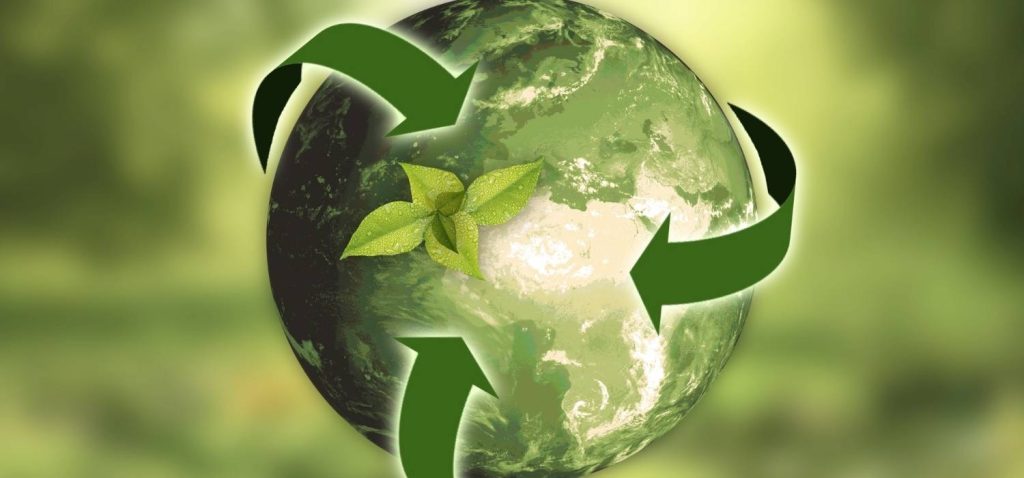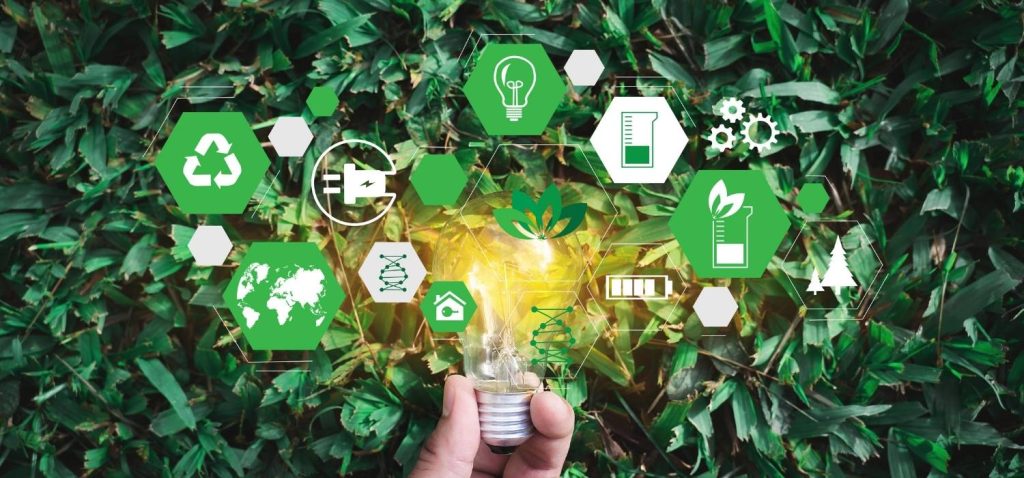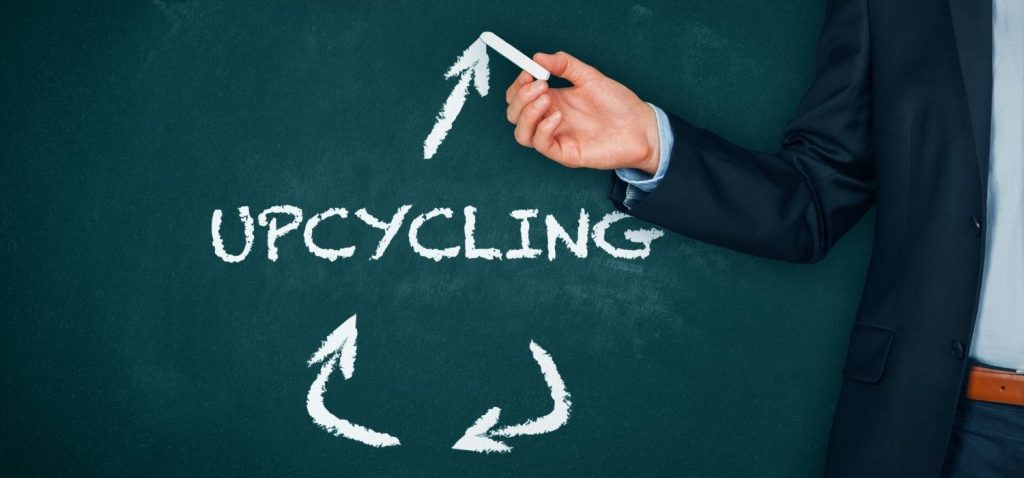The high demand for plastic, which results in greenhouse gas emissions during production and combustion, has a considerable impact on global warming. Upcycling, which gives items a second life, is one remedy. Upcycling enables plastic to re-enter the economic cycle in a new form, where it precisely fulfills its new function—from sneakers and water bottles to car seat covers and smart cards. Upcycling also satisfies the demands of a growing number of consumers looking for sustainable products and increases business sustainability levels. However, let’s understand the concept of upcycle first.
Quick View
- What is Upcycling
- Benefits of Upcycling
- Reasons Why Upcycle helping The Earth
- Different Between Upcycling and Recycling
- Ways To Upcycle
- Smart Card Role In Business Sustainability
- Conclusion
What is Upcycling?

Upcycling refers to a number of procedures that allow “old” products to be changed and given a second chance at life as a “new” product. In some instances, upcycling refers to materials or objects that can be creatively re-purposed or altered, extending their useful lives in the process.
Comparing upcycling to downcycling is the best method to comprehend it. Recycling comes in both forms. The type of recycling that comes to mind when we think of recycling is downcycling, such as recycling paper or plastic. In order to produce a product that is thought to be less valuable than the original, these materials are broken down and reused. For instance, the majority of recycled paper, including old newspapers, is regarded as being of lesser quality.
The main distinction between upcycling and downcycling is that upcycling involves creating a new, separate product of high quality whereas upcycling consists of producing a lower-quality version of the same thing.
A circular economy is also supported by upcycling. In a circular economy, products are used and reused again rather than being thrown away after a single usage. This approach is more environmentally friendly since it makes use of what we currently have rather than always developing new goods utilizing fresh resources.
Benefits of Upcycling

Less waste ending up in landfills is upcycling’s most evident advantage. Methane emissions from landfills, one of the most potent greenhouse gases, are the most important issue. It is a major cause of climate change because it absorbs more solar heat than carbon dioxide. The long-term health of our world will benefit from fewer materials going into landfills.
Utilizing fewer natural resources is another great advantage of upcycling. Utilizing what we already have prevents us from taking more raw materials from the environment than is actually required.
Even large businesses and small firms must adhere to this. In addition to reducing your reliance on natural resources, upcycling can really help you cut manufacturing costs if you operate a business and want to implement it. Utilizing pre-existing materials will ultimately result in lower costs and a higher profit margin.
Reasons Why Upcycle Helping The Earth

Three key importance of upcycling over downcycling exist, such as:
Reduces the Extraction of Natural Resources to a Minimum
When you upcycle something, you utilize fewer raw resources and fewer synthetic materials because you already have what you need. This can make a significant difference for companies that use a lot of resources, both natural and synthetic. Consider how many trees we could save if we just utilized recycled wood to make our furniture.
Reduces Waste for Landfill
Additionally, upcycling prevents your original product from ending up in a landfill. Plastics can only be downcycled once or twice before the product degrades, even if the original item is recyclable. If our recyclables aren’t biodegradable, they can eventually end up in a landfill, which is dangerous. However, objects can be upcycled into things that have a considerably longer lifespan.
A Reduction In Manufacturing and Carbon Emissions
Preserving natural resources and lowering the demand for manufacturing are two advantages of minimizing resource usage. Large amounts of carbon emissions can be produced during the transformation of raw materials into finished goods, particularly when mass production is used. Additionally, recycling still emits carbon. Even while downcycling is considerably better than throwing things in the trash, upcycling is preferable.
Different Between Upcycling and Recycling
When it comes to sustainability, there are a lot of buzzwords, but there are important distinctions between a handful of them and how they affect the environment. Possibly the most frequently used word these days is “recycling.” Recycling is the practice of gathering waste materials and turning them into brand-new useful items. Recoveries facilities receive recyclables including bottles, plastic, and cardboard, and sort, clean, and convert them into new commodities that can be purchased and sold. Plastic bottles, for example, can be melted down and used again to make new plastic products.
Ways To Upcycle

It could sound intimidating to upcycle. (Creating high-quality shoes from plastic bottles doesn’t sound like it would be simple.) However, there are many ways to upcycle and support a sustainable and circular economy.
Shop At Companies That Upcycle
This one is fairly simple. Don’t worry if you’re not confident in your own upcycling skills. There are many companies that will complete the work for you. For example, UpCircle makes skincare products for the beauty industry that incorporate upcycled components, such as discarded coffee grounds from coffee cafes. Then there is the clothing company Re/Done, which creates brand-new clothing from used fabrics and discarded garments. Even food products made from recycled components, such as residual soy pulp from soy milk processing, are available from Renewal Mill. You support a more environmentally friendly industry every time you make a purchase from a company that upcycles. Additionally, it shows businesses that there is a market for all kinds of repurposed goods.
Upcycle Your Old Items for New Use
There are some simple upcycling ideas you may do at home if you’re feeling inventive. Look into some do-it-yourself home decorating suggestions, like transforming an old rug into a pinboard. Alternately, try these simple techniques for upcycling used clothing, like transforming a t-shirt into a hanging planter.
Smart Card Role In Business Sustainability

With the information provided above, it is clear that smart business cards can contribute to a company’s increased degree of sustainability. Some materials, such as recycled plastic and wood, can be transformed into high-quality smart business cards by upcycling, which will help your company appear more sustainable to customers. Alternatively, if you no longer require your smart card, you can recycle it and make something useful out of it, such as a smartphone stand, guitar pick, cable organizer, etc. a system that benefits people, the environment, and business.
Conclusion
Businesses must adapt and find ways to become more environmentally friendly as business sustainability gradually gains importance among both customers and businesses. One method is upcycling, which can raise a company’s sustainability level by utilizing all of its waste products and giving them new uses. One simple illustration is the ability to use recycled plastic to create smart cards for GOTAP or for other purposes.


